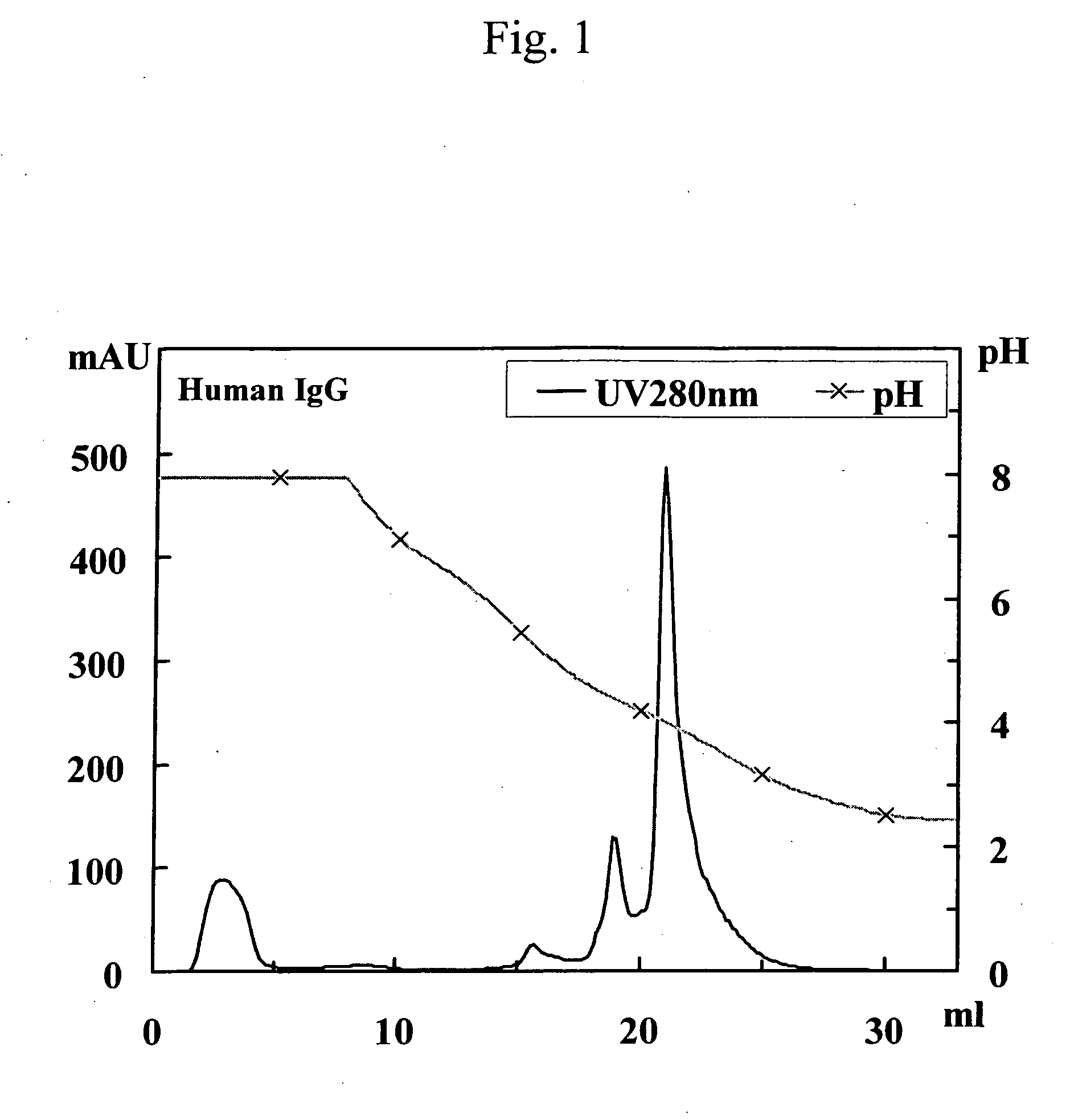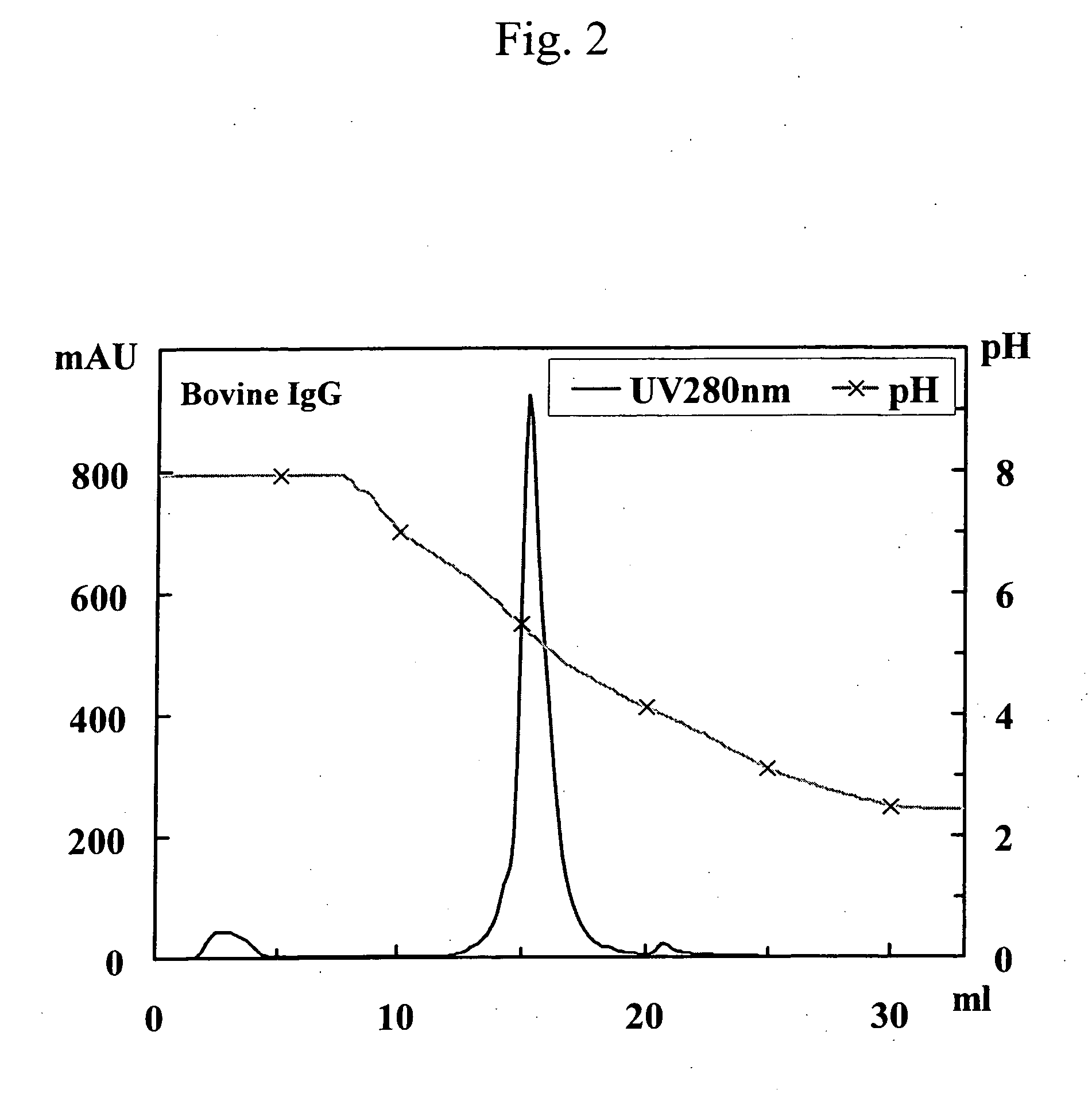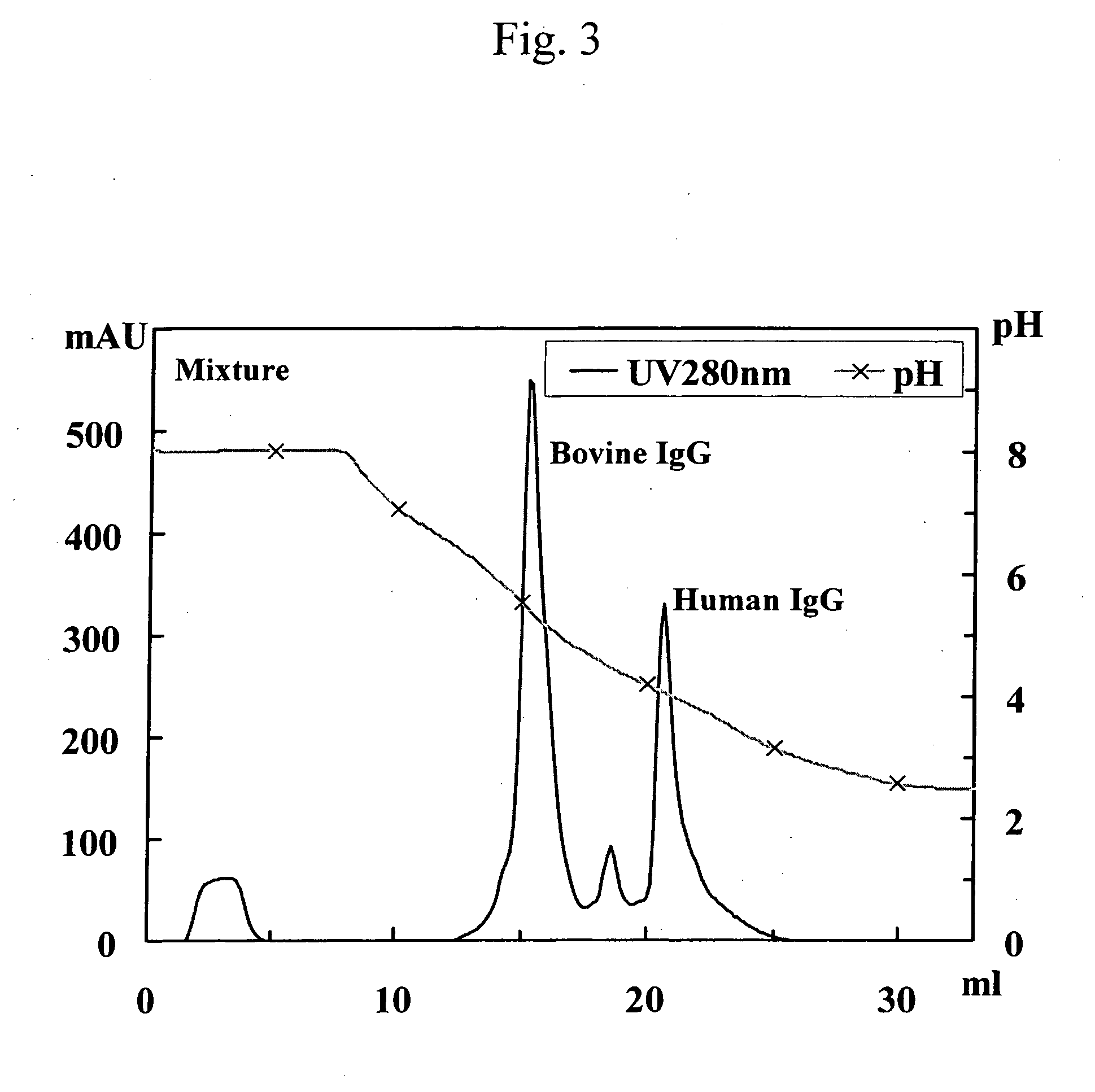Purification of human monoclonal antibody and human polyclonal antibody
a technology of monoclonal antibodies and polyclonal antibodies, which is applied in the field of purification of antibodies, can solve the problems of no report on the separation of human antibodies from bovine or sheep antibodies, no report on the separation of bovine, goat or sheep polyclonal antibodies from human polyclonal antibodies, and step of dilution, so as to achieve the effect of prolonging the operating time and increasing the volum
- Summary
- Abstract
- Description
- Claims
- Application Information
AI Technical Summary
Problems solved by technology
Method used
Image
Examples
example 1
Purification of Human Monoclonal Antibodies
[0249] A serum free culture supernatant of CHO cells (220 ml; level of human monoclonal antibodies expressed: 700 mg / l) containing human monoclonal antibodies (human IgG1 antibodies) clarified via a depth filter and a 0.2-μm membrane filter was applied to the protein A column (MabSelect; 8 mm ID×20 cm; Amersham Biosciences) that had been equilibrated with a buffer (pH 7.0) containing 20 mM sodium phosphate and 0.15 M sodium chloride (linear flow rate: 500 cm / h). After the culture supernatant had been applied, the column was washed with 5 column volumes of buffer for equilibration (linear flow rate: 500 cm / h). Subsequently, human monoclonal antibodies were eluted using 5 column volumes of 20 mM sodium citrate buffer (pH 3.5) (linear flow rate: 500 cm / h). A 100 mM sodium phosphate buffer (pH 8.0) was added to the eluate to bring the pH level to 7.0. This procedure was also carried out by using a 1.0 M Tris-HCl buffer instead of the 100 mM so...
example 2
Separation and Purification of Human Polyclonal Antibodies from Bovine Polyclonal Antibodies
[0258] Human polyclonal antibodies (3 mg; trade name: Human IgG from Serum; Cat No. 14506; Sigma) and bovine polyclonal antibodies (3 mg; trade name: Bovine IgG from Serum; Cat No. I5506; Sigma) were each separately dissolved in 3 ml of buffer (pH 8.0) containing 0.10 M disodium phosphate, 0.10 M sodium acetate, 0.10 M glycine, and 0.15 M sodium chloride. Thereafter, the resulting solutions were allowed to pass through a 0.2-μm filter and then separately designated as the solution of human polyclonal antibodies and the solution of bovine polyclonal antibodies.
[0259] The following 3 samples were separately applied to 3 protein A columns (POROS A / 20; 4.6 mm ID×5 cm; Applied Biosystems) that had been equilibrated with a buffer (pH 8.0) containing 0.10 M disodium phosphate, 0.10 M sodium acetate, 0.10 M glycine, and 0.15 M sodium chloride (linear flow rate: 90 cm / h). The 3 samples were as follo...
example 3
Purification of Human Monoclonal Antibodies II
[0261] A serum free culture supernatant of CHO cells (1,500 ml; level of human monoclonal antibodies expressed: 700 mg / l) containing human monoclonal antibodies (human IgG1 antibodies) clarified via a depth filter and a 0.2 μm-membrane filter was applied to the protein A column (MabSelect; 20 mm ID×20 cm; Amersham Biosciences) that had been equilibrated with a buffer (pH 6.0) containing 10 mM sodium phosphate (linear flow rate: 500 cm / h). After the culture supernatant had been applied, the column was washed with 5 column volumes of buffer for equilibration (linear flow rate: 500 cm / h). Subsequently, human monoclonal antibodies were eluted using 5 column volumes of a buffer (pH 3.4) containing 20 mM sodium citrate (linear flow rate: 500 cm / h). Citric acid, 1 M, was added to the eluate to bring the pH level to 3.5 for the purpose of virus inactivation. The resulting solution was allowed to stand for 45 minutes at room temperature, and the...
PUM
| Property | Measurement | Unit |
|---|---|---|
| pH | aaaaa | aaaaa |
| pH | aaaaa | aaaaa |
| pH | aaaaa | aaaaa |
Abstract
Description
Claims
Application Information
 Login to View More
Login to View More - R&D
- Intellectual Property
- Life Sciences
- Materials
- Tech Scout
- Unparalleled Data Quality
- Higher Quality Content
- 60% Fewer Hallucinations
Browse by: Latest US Patents, China's latest patents, Technical Efficacy Thesaurus, Application Domain, Technology Topic, Popular Technical Reports.
© 2025 PatSnap. All rights reserved.Legal|Privacy policy|Modern Slavery Act Transparency Statement|Sitemap|About US| Contact US: help@patsnap.com



